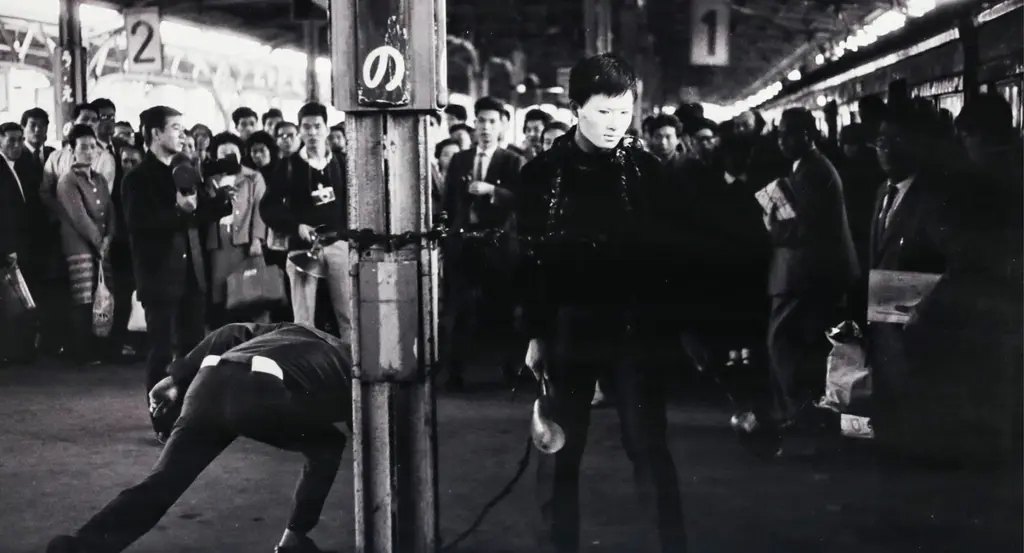Graffiti pioneer Lee Quiñones has kept on painting through street art's ebb and flow
- Text by Tom Fenwick
- Photography by Carlos S.

#46 – Lee Quiñones
New York has come alive; rattling shutters, chattering workers and the hubbub of schoolchildren echo through the streets. Beneath the city, the rumble of the subway unifies this soundtrack, its percussive rhythms the only constant amid fluctuating urban decay. And on the Lower East Side, the pulse of the underground has beaten up through the pavement.
An explosion of colour appears on a handball court overnight, the bold tag — “LEE” — detonating off the wall in vast letters. A cartoon icon, Marvel’s Howard The Duck, shields himself from the blast with a dustbin lid, the top corner of the concrete canvas bearing a simple message: “Graffiti is a art and if art is a crime, let god forgive all”.
It’s 1978 and this audacious mural — the first of its kind — is the work of Lee Quiñones. At just eighteen years old his work will go on to become the stuff of NYC graffiti lore, with this first piece catalysing street–art’s meteoric rise. Soon, he’ll become an international icon for the movement. Born to a working-class Puerto Rican family in 1960, Quiñones was a prodigious talent, and by his early teens he was ready to move his artistic vision from the confines of the playground to the wider world.
“New York was such a vibrant city and in 1974 the streets were an easy place to hone your skills. There were no distractions, just attractions. The subway stock was a dynamic gold mine of moving parts, its thunderous claps like a party, taking place underneath our feet.”
As a living artist Quiñones holds a unique place in history, but unlike the greats who’ve followed him, much of his finest work is lost forever. It’s a hard price to pay, but forty years on he’s philosophical about the ebb and flow of the art world.
“What people don’t realise is that every important movement throughout history has had a series of waves before eventual recognition — pinnacles, peaks and powerful refills in between. Those waves have been coming in since my first European exhibition in 1979, and for a while they seemed to recede, only to come back again with a palette of new talent.”
And it’s a resilience to the whims of those tides that — much like the artistic movement he pioneered — still sees him flourish today.
“It has taught me more about myself than anything else. Because through thick and thin, I kept my brushes wet.”
This is just a short excerpt from Huck’s Fiftieth Special, a collection of fifty personal stories from fifty inspiring lives.
Grab a copy now to read all fifty stories in full. Subscribe to make sure you don’t miss another issue.
You might like

A new documentary explores Japan’s radical post-war photography and arts scene
Avant-Garde Pioneers — Focusing on the likes of Daidō Moriyama, Nobuyoshi Araki, Eikoh Hosoe and many more, the film highlights the swell of creativity in the ’60s, at a time of huge economic change coupled with cultural tensions.
Written by: Isaac Muk

From his skating past to sculpting present, Arran Gregory revels in the organic
Sensing Earth Space — Having risen to prominence as an affiliate of Wayward Gallery and Slam City Skates, the shredder turned artist creates unique, temporal pieces out of earthly materials. Dorrell Merritt caught up with him to find out more about his creative process.
Written by: Dorrell Merritt

Inside the world’s only inhabited art gallery
The MAAM Metropoliz — Since gaining official acceptance, a former salami factory turned art squat has become a fully-fledged museum. Its existence has provided secure housing to a community who would have struggled to find it otherwise.
Written by: Gaia Neiman

Gaza Biennale comes to London in ICA protest
Art and action — The global project, which presents the work of over 60 Palestinian artists, will be on view outside the art institution in protest of an exhibition funded by Bloomberg Philanthropies.
Written by: Cyna Mirzai

The White Pube: “Artists are skint, knackered and sharing the same 20 quid”
We caught up with the two art rebels to chat about their journey, playing the game that they hate, and why anarchism might be the solution to all of art’s (and the wider world’s) problems.
Written by: Isaac Muk

Meet Corbin Shaw, Huck 81’s Artist in Residence
The Sheffield born artist talks about the people and places that shaped his practice for the latest issue of Huck.
Written by: Josh Jones